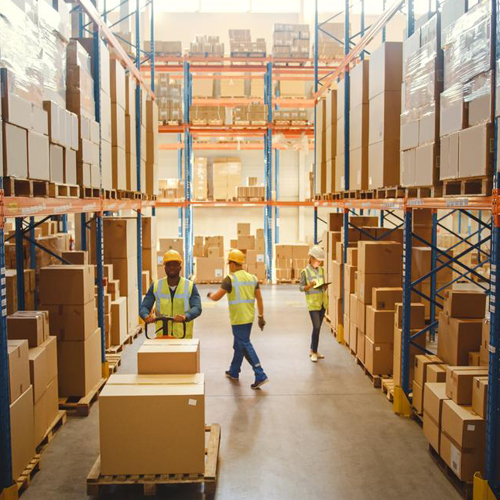In transportation, there are many types of goods, each type of goods will have different characteristics and requirements. Therefore, accurately determining the type of goods being transported is the best way to fully prepare for customs procedures, as well as avoid unnecessary risks. So what are dangerous goods? What should businesses pay attention to when transporting this type of goods? Let’s find out the details in the article below by SSR Logistics.
Please read Part 01: HERE
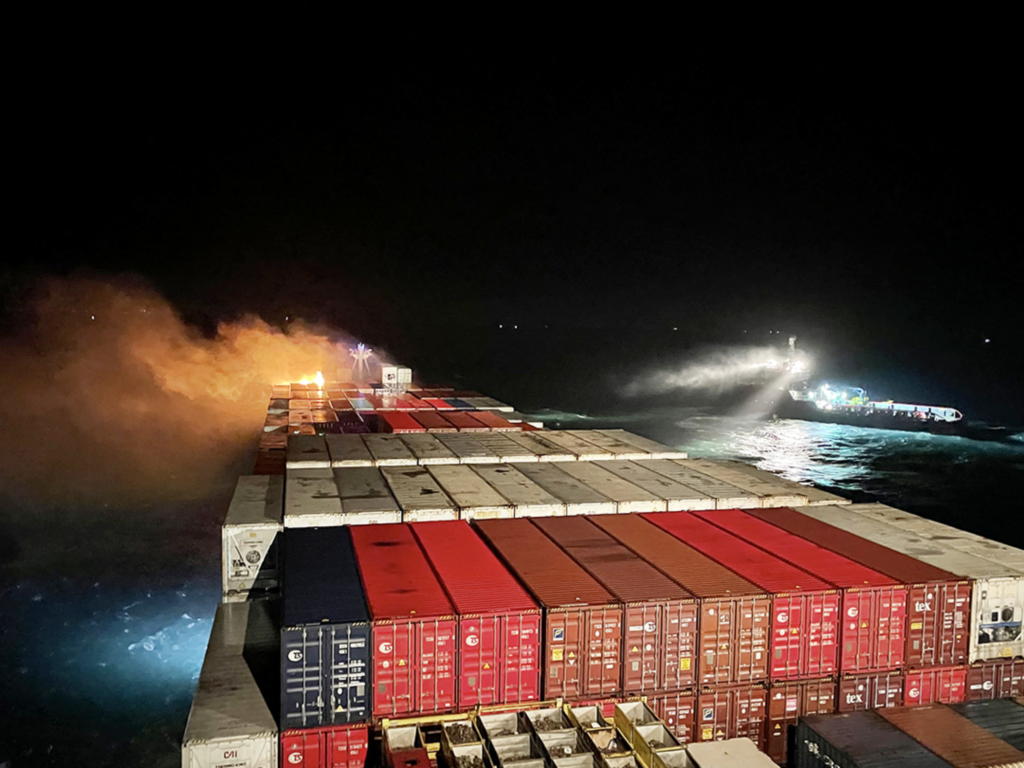 A ship carrying 2,200 containers from Ho Chi Minh City to China suddenly caught fire at sea. Source: VNExpress
A ship carrying 2,200 containers from Ho Chi Minh City to China suddenly caught fire at sea. Source: VNExpress
Common dangerous goods labels
Commonly used hazard labels are used to quickly identify the types of hazards that goods may pose during transportation and handling. These labels comply with international regulations and often have specific colors, symbols, and codes to indicate the type of hazard, helping to ensure the safety of people and the environment. Here are some common hazard labels:
Explosives – Class 1
Color: Orange with an exploding bomb symbol.
Meaning: Indicates explosive or highly explosive item.
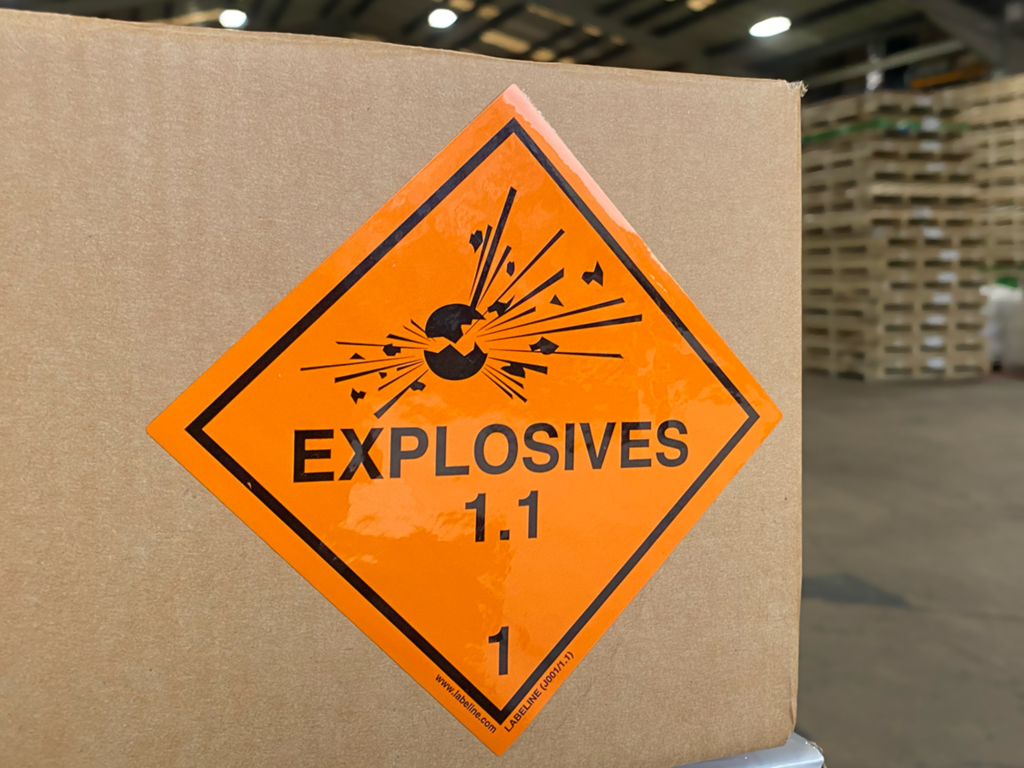 Goods labeled in orange as shown in the picture represent dangerous goods Class 1 – Explosives
Goods labeled in orange as shown in the picture represent dangerous goods Class 1 – Explosives
Gases – Class 2
- Flammable gases (Divisions 2.1): Flame symbol, red.
- Non-flammable, non-toxic gases (Divisions 2.2): Gas cylinder symbol, green.
- Toxic gases (Divisions 2.3): Skull and crossbones symbol, white.
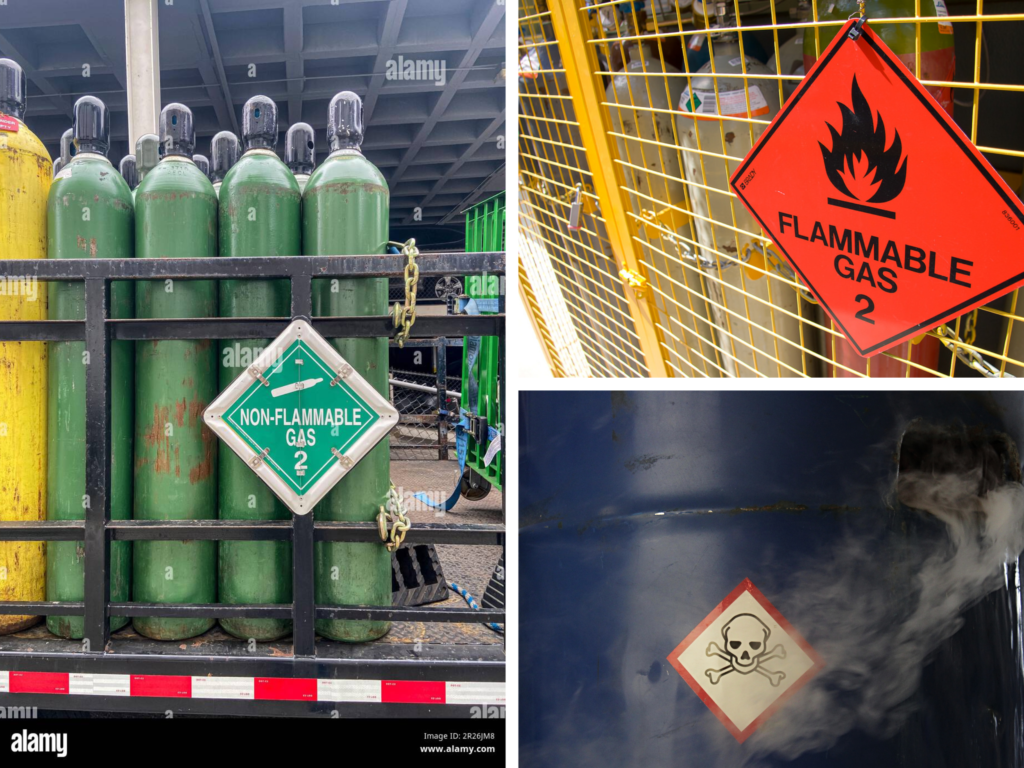 For dangerous goods in Class 2 – Gas, there will usually be the following labels
For dangerous goods in Class 2 – Gas, there will usually be the following labels
Flammable Liquids – Class 3
Color: Red with a flame symbol.
Meaning: Warning of flammable liquids when exposed to heat.
We can’t paste this image from the Clipboard, but you can save it to your computer and insert it from there.
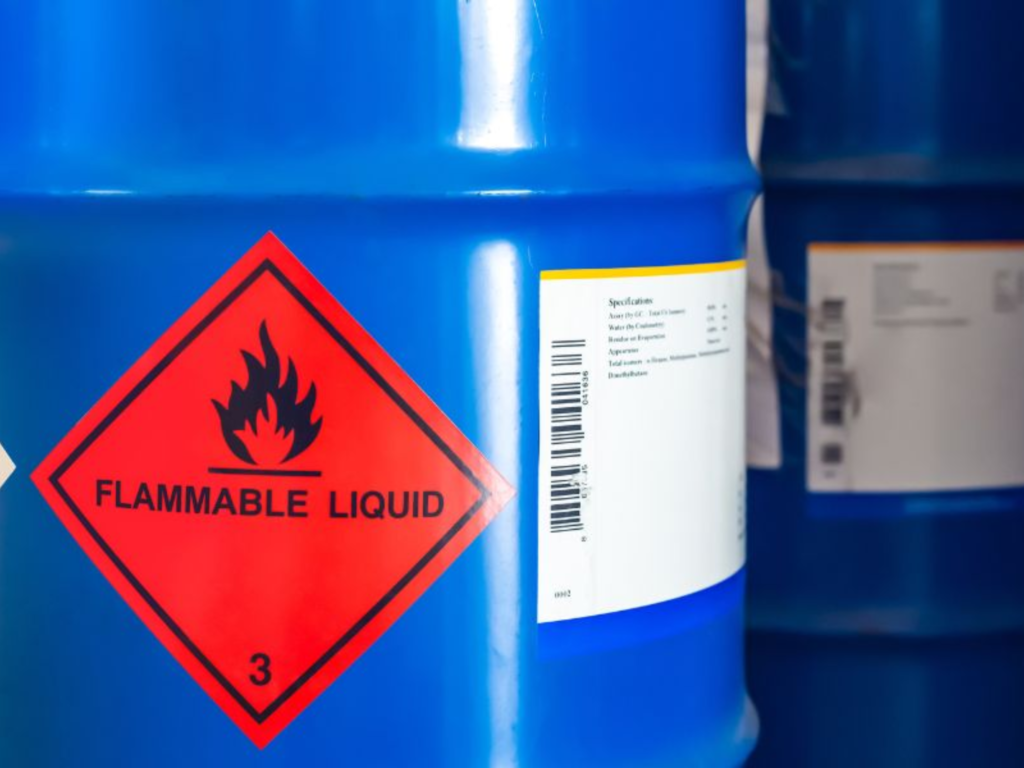 Labels for dangerous goods Class 3 – Flammable liquids
Labels for dangerous goods Class 3 – Flammable liquids
Flammable Solids – Class 4
Color: Red and white with a flame symbol.
Meaning: Indicates flammable solid or spontaneous combustion.
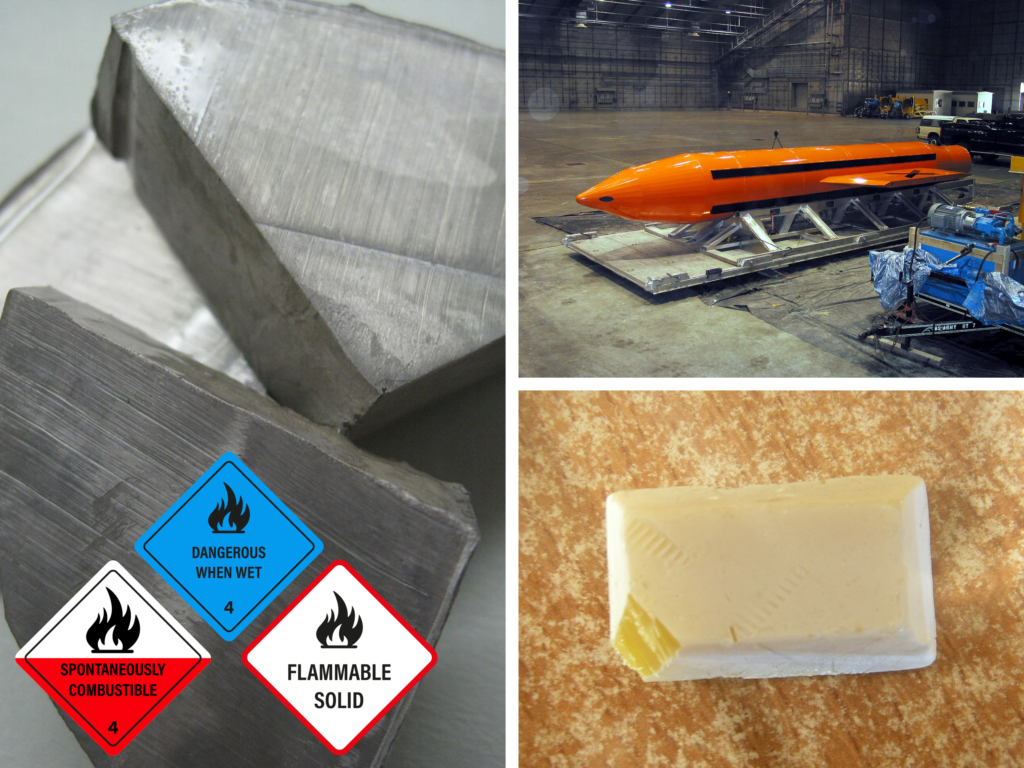 Goods in Class 4 – Flammable solids are usually labeled with the above 3 labels
Goods in Class 4 – Flammable solids are usually labeled with the above 3 labels
Oxidizing Substances & Organic Peroxides – Class 5
- Oxidizing agents (Class 5.1): Yellow with a circle symbol with flame.
- Organic peroxides (Class 5.2): Red and yellow, flame symbol.
Meaning: Warning of substance that can provide oxygen to sustain fire.
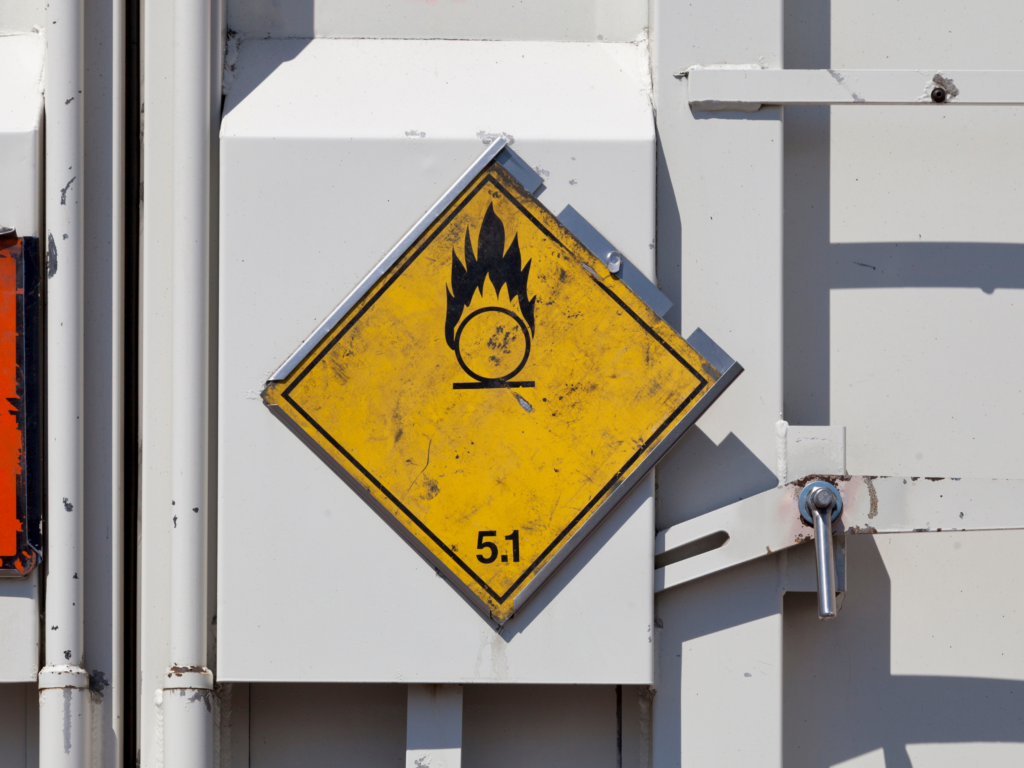 Dangerous goods labeled with a yellow circle and flame symbol will represent oxidizing substances
Dangerous goods labeled with a yellow circle and flame symbol will represent oxidizing substances
Toxic & Infectious Substances – Class 6
- Poisonous substances (Class 6.1): Skull and crossbones symbol, white.
- Infectious substances (Class 6.2): Three concentric circles symbol, white.
Meaning: Warning of the risk of poisoning or infection by contact.
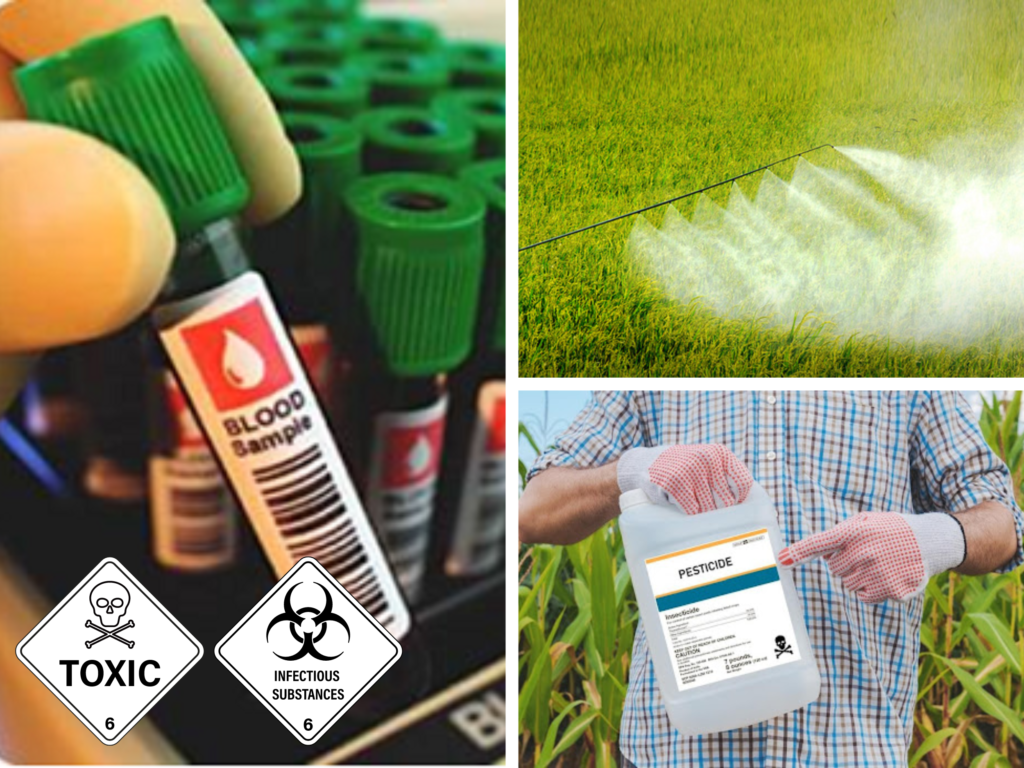 The skull and crossbones symbol, white, and the three concentric circles symbol, white,+ warn of the risk of contamination or infection through contact
The skull and crossbones symbol, white, and the three concentric circles symbol, white,+ warn of the risk of contamination or infection through contact
Radioactive Materials – Class 7
Color: Yellow and white with three radiation fan symbols.
Meaning: Signals the presence of radioactive material, potential risk of ionizing radiation
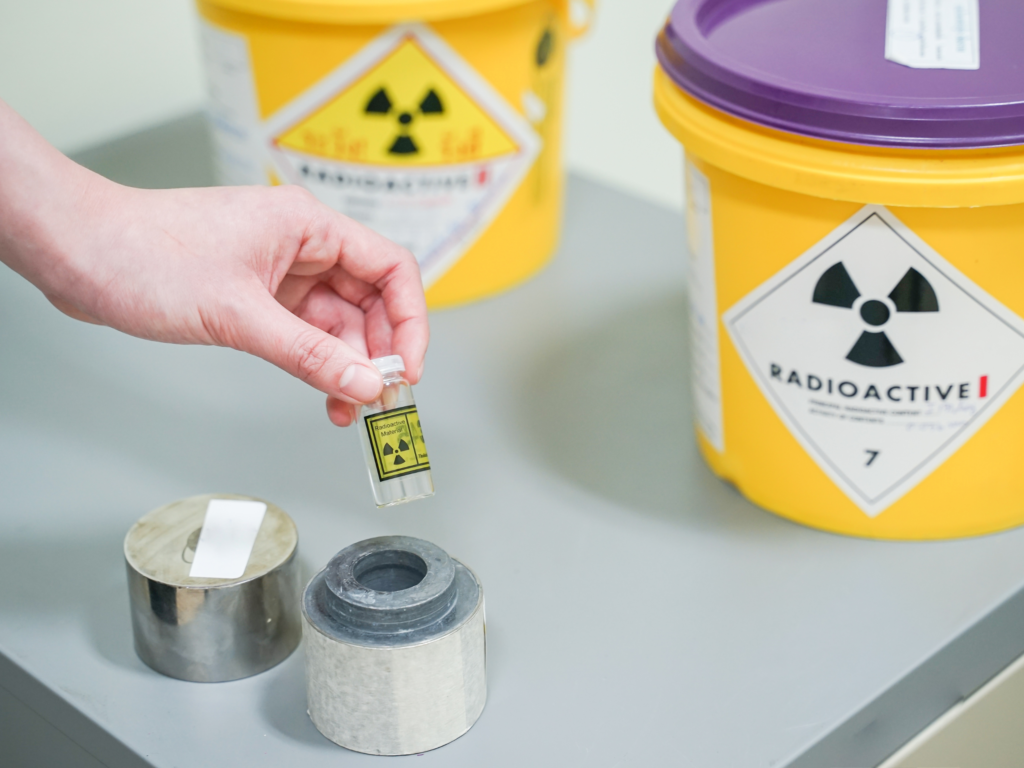 Dangerous Goods Labels Radioactive Substances
Dangerous Goods Labels Radioactive Substances
Corrosive Substances – Class 8
Color: Black and white with acid spilled on hands and corroded metal.
Meaning: Warning of substances that can corrode metal and damage skin and living tissue.
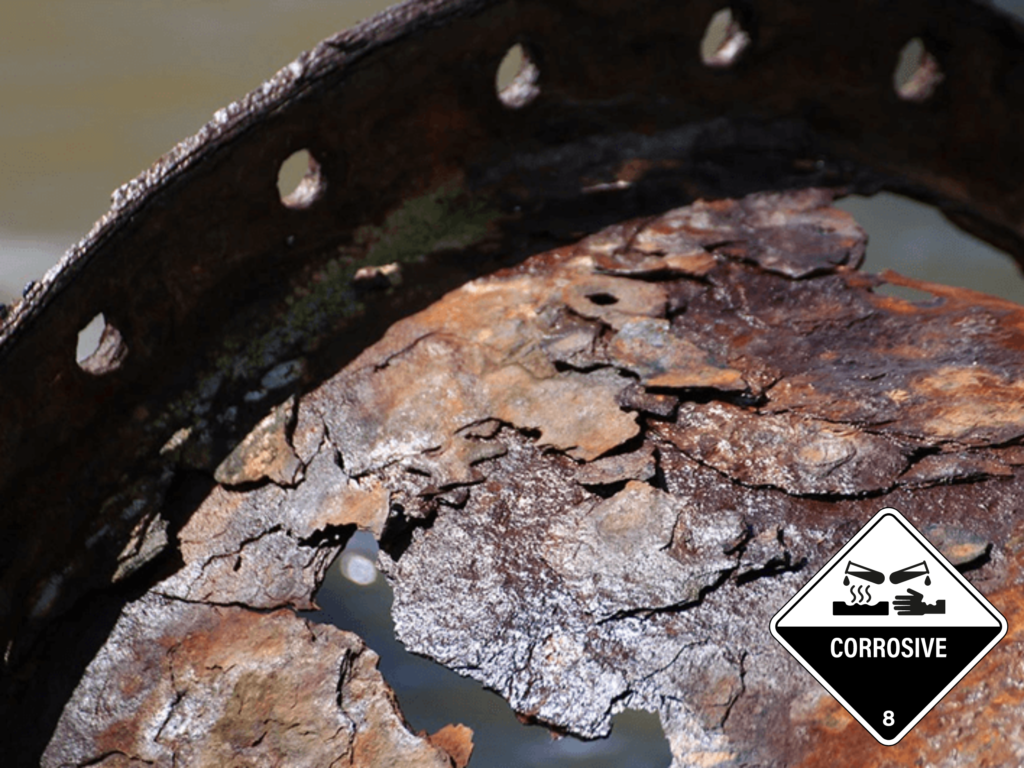 Labels of dangerous goods Class 8 – Corrosive substances
Labels of dangerous goods Class 8 – Corrosive substances
Miscellaneous Dangerous Goods – Class 9
Color: Black and white stripes or blue.
Meaning: Used for other hazardous substances not included in the above 8 groups, such as environmental pollutants.
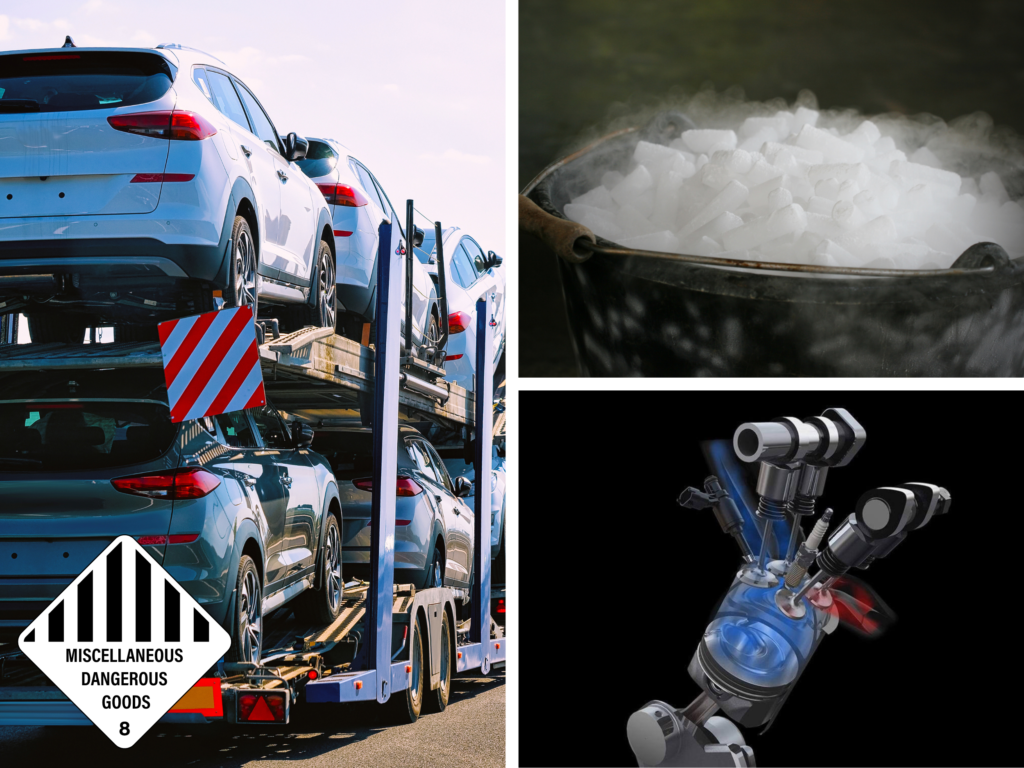 Labels of dangerous goods Class 9 – Other dangerous goods
Labels of dangerous goods Class 9 – Other dangerous goods
Regulations on dangerous goods in import and export
The transportation and handling of dangerous goods requires strict compliance with specific requirements to ensure the safety of people, vehicles, and the environment.
On means of transporting dangerous goods
Vehicles transporting dangerous goods must meet all traffic conditions and comply with technical standards prescribed by state agencies. Vehicles must be equipped with clear identification signs or symbols to help drivers and people around them recognize that they are in contact with dangerous goods.
After completing the transport and no longer carrying dangerous goods, the vehicle must be cleaned, any remaining substances inside, and remove or the dangerous symbol to avoid misunderstandings or dangers for future transport.
On packaging and preservation of dangerous goods
Due to the special nature of the goods, the packaging must meet anti-corrosion requirements, ensuring that no chemical reaction occurs with the contents. The packaging also needs to be waterproof and prevent leakage into the environment, ensuring safety during transportation and storage.
After the goods are unloaded, the packaging must be collected and processed according to strict procedures in a specialized area to avoid affecting the environment and human health.
On exploitation and unloading of dangerous goods
The handling and unloading of dangerous goods must be done by personnel who are trained and experienced in handling special goods. Each step in the process must be carried out carefully, step by step to minimize unwanted impacts and avoid danger to goods and the safety of employees.
Compliance with regulations and technical procedures not only ensures the safety of workers and vehicles but also protects the environment and the community from potential risks when transporting dangerous goods.
Notes on dangerous goods in import and export
If you are transporting dangerous goods by sea, road, rail, or air, you need to prepare all necessary documents and procedures. Specifically as follows:
Issuing a license to transport dangerous goods
Licenses for transporting dangerous goods, depending on the type, will be issued by the following authorities:
- Toxic chemicals: Issued by the Ministry of Natural Resources and Environment.
- Plant protection substances: Issued by the Ministry of Agriculture and Rural Development.
- Dangerous goods of types 5, 7, 8: Issued by the Ministry of Science and Technology.
- Dangerous goods of types 1, 2, 3, 4, 9: Issued by the Ministry of Public Security.
- Toxic chemicals in medicine and insecticides and disinfectants used in households: Issued by the Ministry of Health.
In addition, the Ministry of National Defense and the Ministry of Public Security also have separate regulations on the transport of dangerous goods for security and national defense.
Providing MSDS (Physical and chemical composition analysis table)
The import and export of dangerous goods are strictly controlled and require the sender to provide a Material Safety Data Sheet (MSDS). This is a document containing detailed information about the properties of a specific chemical.
However, not all goods require an MSDS. This requirement mainly applies to dangerous goods, especially those that are flammable or explosive. Even powdered products such as dietary supplements and cosmetics may require an MSDS certificate to ensure safety.
Regulations on packaging of goods
Packaging and containers of dangerous goods must comply with the regulations on labeling goods in the correct order and principles. Here are some specific instructions:
- For flammable and explosive chemicals, they must be sealed and kept away from sources of fire or ignition.
- Reactive or corrosive substances should be contained in bottles made of glass or suitable materials.
- Infectious or toxic goods must be equipped with labor protection when packaged and sent.
- Gasoline, oil, and flammable and explosive substances must be transported by specialized vehicles.
- Flammable and explosive goods should be placed on shelves, not in direct contact with the vehicle body to avoid the effects of water.
- After packaging, it is necessary to clearly state information and affix a hazard symbol label on the packaging.
Strict compliance with safety regulations, use of chemical safety data sheets, and proper packaging are important factors in the transportation of dangerous goods. In this way, we can ensure safety and minimize incidents during transportation.
SSR Logistics is a unit providing fast, safe and economical dangerous goods transportation services
Exporting and importing dangerous goods is a relatively complicated, time-consuming, and specialized process. Understanding this, SSR Logistics was born with the mission of becoming a reputable partner to support businesses in exporting and importing dangerous goods quickly, safely, and cost-effectively.
Why choose SSR Logistics?
- Experienced staff
- Professional process
- Dedicated support 24/7
- Competitive price
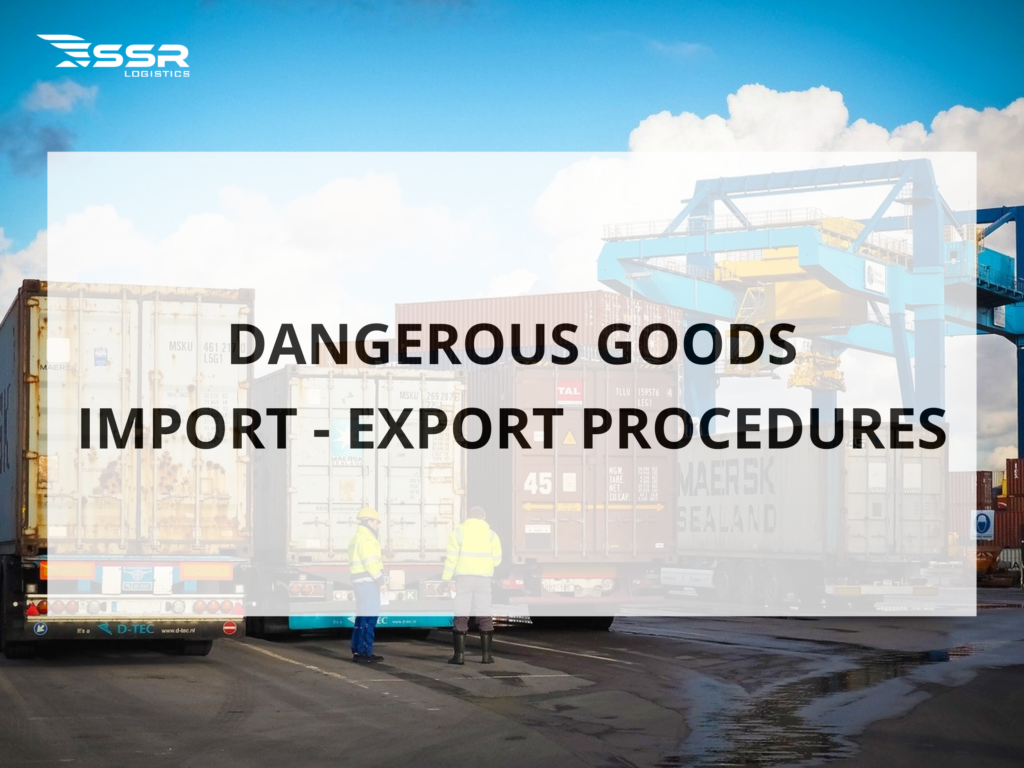 SSR Logistics performs a full package of dangerous goods import and export procedures
SSR Logistics performs a full package of dangerous goods import and export procedures
SSR Logistics’s Pharmaceutical Import Procedures Service includes:
- Free consultation on the Export-Import process of dangerous goods
- Support in preparing complete and accurate Export – Import Procedures for dangerous goods
- Submit documents and monitor the progress of Export – Import Procedures for dangerous goods.
- Consult on solutions in case of problems.
- Providing import-export freight services
With SSR Logistics, you can be completely assured about the implementation of Export the import of dangerous goods. We are committed to providing you with professional, reputable, and effective services, helping you save time and costs.
Through this article, SSR Logistics hopes that customers can better understand Dangerous goods in import and export. To explore more diverse knowledge in the field of logistics, please visit our Logistics Knowledge section.
SSR looks forward to becoming your reliable logistics partner, providing optimal solutions for your import and export business. If you have questions about our services, please contact us for specific advice.
With our experienced team, extensive network and flexible shipping & customs solutions, SSR Logistics is confident to deliver excellent services to our clients.
Businesses that need customs and import-export, please contact SSR Logistics via Hotline (+84) 911 988 484 or leave your information here for specific advice.
With a modern warehouse system and experienced transportation staff, SSR Logistics provides a variety of additional services such as: customs clearance, warehouse leasing, domestic transportation, international transportation by sea and air, and international express delivery.

